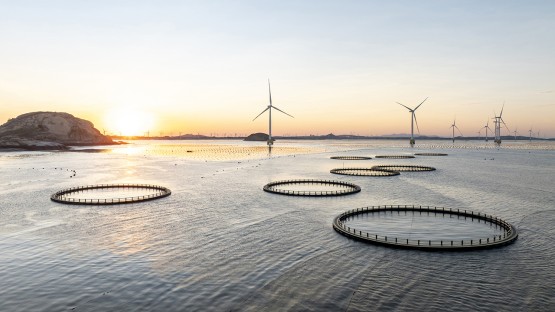For more than a century, sport has been the crucible in which the art of timekeeping was forged into science. The earliest wrist chronographs were built to time laps on racetracks and record splits at marathons. From the first Olympic…

For more than a century, sport has been the crucible in which the art of timekeeping was forged into science. The earliest wrist chronographs were built to time laps on racetracks and record splits at marathons. From the first Olympic…

Spotify’s commitment to supporting women in music spans genres, generations, and cultures. This week, we’re excited to announce a new chapter in our partnership with ELLE: Three…
SYDNEY, Oct. 8 (Xinhua) — An Australian-led study has found that women carry a significantly higher genetic risk of depression compared to men.
The study revealed for the first time important genetic differences in how females and males…

A Cornell doctoral student has developed an open-source software package that could transform how engineers design floating offshore structures for renewable energy and other ocean applications.
Kapil Khanal, a doctoral student in the field of systems engineering, is lead author of a study in Applied Ocean Research describing a “fully differentiable boundary element solver” that uses modern computational techniques to deliver fast, precise analysis of wave-structure interactions. The software package is called MarineHydro.jl.
This solver allows engineers to test how small changes in a design of an offshore structure, such as altering the diameter of a floating platform or changing the spacing between floating platforms, will affect performance, without having to build multiple prototypes or running time-consuming simulations.
“Traditional simulation tools came out of the offshore oil and gas industry in the 1970s and ’80s,” Khanal said. “They perform well for oil and gas platforms, but when we look at new devices like wave-energy converters or floating wind turbines, the old methods don’t really capture the challenges we need to address today.”
Existing software can model how a design behaves when in waves, but recalculating for every parameter change is computationally expensive. Khanal’s software integrates reverse-mode automatic differentiation – a technique widely used in machine learning – directly into the hydrodynamic solver.
“When you run the simulation once, the software gives you not only the performance of the system as it is but also how that performance changes if you tweak any of your inputs,” Khanal said. “You get all the sensitivities at once without having to run multiple simulations.”
Khanal compares it to taking a single bite of a dish and knowing instantly how the salt, the spice, the lemon and the garnish shaped the flavor without having to taste the dish ingredient by ingredient.
The solver has already been applied to model interactions among floating spheres and to optimize the layout of wave-energy converters, and the tool’s flexibility will be useful as engineers experiment with other novel, offshore systems.
“For some newer technologies like wave-energy converters and hybrid symbiotic systems, there isn’t one agreed-upon base design yet,” Khanal said. “It depends on the application, and there’s a need for software that can handle that diversity of designs.”
MarineHydro.jl is supported by Sandia National Laboratories, which is funding its continued development. Khanal built the solver in Julia, a programming language gaining traction in engineering circles for its speed and interoperability. The solver is open source and is already attracting interest from researchers and engineers.
“It already has about 20 stars on GitHub, with people using it from Brazil, Virginia Tech and Europe,” Khanal said. “That’s been exciting. It shows my Ph.D. research produced a tool people can actually use.”
The study’s senior author is Maha Haji, visiting assistant professor in Cornell’s Sibley School of Mechanical and Aerospace Engineering and an assistant professor at the University of Michigan.
This project was funded by grants from the U.S. Department of Energy’s Seedling and Sapling Program.
Chris Dawson is a communications coordinator for Cornell Engineering.

This article originally appeared in Insurance Day, September 2025.
It has been a period of significant change for the UK pensions industry, with both the Pensions Regulator (TPR) and the Pensions Ombudsman (TPO) undergoing reforms that will impact how schemes are managed, how disputes are resolved, and how professionals in the industry must operate. This will have implications for the sector’s professional liability insurers.
With the next Budget taking place on November 26 and the government under pressure to improve the country’s finances, further change could be on the horizon.
TPR has set out a new agenda, which seeks to place stronger emphasis on transparency, governance, and long-term value, particularly within defined contribution (DC) schemes. Previously, much of TPR’s attention – often with good reason – has been on defined benefit (DB) schemes. However, to ensure risks with DC schemes are not overlooked, the new Pension Schemes Bill will deliver a number of significant changes.
A new value-for-money framework will require schemes to be more transparent about costs, investment returns and governance. This means that advisers, administrators, and trustees will have to ensure they have adequate reporting in place and demonstrate that schemes are working in members’ interests.
DB scheme rules on accessing surplus funds are being relaxed. Employers and trustees are encouraged to return surplus funds to the beneficiaries, where appropriate. This caused some trepidation around exposing employers and trustees to potential claims, however, the surplus will only be returned if certain safe guards are met. While this could release locked-up value, it also creates new risks that professionals will need to navigate carefully.
The creation of DC “superfunds” is being encouraged, in an attempt to make the UK a more attractive investment option.
The handling of small pensions is being simplified – for example, funds of £1,000 or less will automatically be transferred to the consumer’s largest pension fund.
An increase in trustee oversight, with TPR suggesting that trustees who fail to comply with rules on scheme loans risk regulatory sanctions. The changes reinforce the expectation that trustees must remain up to date with legal and technical knowledge.
Being able to provide evidence that a trustee has engaged with the updated toolkit, recorded their learnings, and taken steps to apply it in practice, is invaluable in rebutting allegations of inadequate knowledge or failure to discharge their statutory duties.
Not all the changes have been welcomed – the suggestion that schemes will be required to invest part of their funds in private markets has raised concerns about embracing too much risk. For advisers and investment managers, closer scrutiny of portfolio choices will be needed, to ensure that markets are performing as expected.
The Financial Conduct Authority (FCA) has also called for a more proactive approach from the pension industry to provide more targeted retirement advice. The suggestion, which has been supported by TPR, indicates that a greater level of understanding is required from advisers, to ensure that the diverse needs of consumers is being met.
Meanwhile, it has been a long-held view that TPO does not have the resource to deal with the number of complaints received. Consequently, much of TPO’s recent focus has been on improving the service offered. This has resulted in faster determinations and the use of “lead cases” – where industry-wide issues are spotted, and one case is used to determine the outcome for all linked cases.
The ombudsman’s next areas of priority include increasing awareness of its early dispute resolution service; improving its current image (to show that it is fit for purpose); and improving the capabilities of its staff.
As a result of the changes, advisers should expect increased compliance burdens, with more reporting and governance checks required. There will be a requirement for more careful planning, where larger funds are merged, while a less relaxed TPO could result in more demanding requirements to respond. Better record-keeping and clearer communications will be vital.
The Government has revived the Pensions Commission, which will explore long-term reforms such as wider auto-enrolment and higher contribution rates. Its findings, expected in 2027, could reshape the retirement savings landscape even further.
For pensions professionals and their insurers, the message is clear: regulation is becoming tougher; oversight is increasing, and expectations are rising.
The changes that have taken place – and those anticipated – mean the pensions advisory landscape is shifting perhaps more rapidly than anticipated. Advisers will find themselves faced with new opportunities to expand their offerings and products available to clients but must be conscious not to go too far – or risk facing claims for inappropriate advice.
Pension trustees and advisers must prepare for deeper scrutiny and faster dispute resolution. Those who adapt early will be best placed to navigate the challenges and benefit from the changes ahead.

Imagine an actor who never ages, never walks off set or demands a higher salary.
That’s the promise behind Tilly Norwood, a fully AI-generated “actress” currently being courted by Hollywood’s top talent agencies. Her synthetic…

Queen Letizia of Spain and Queen Mathilde of Belgium opted for designer pieces by Giorgio Armani and Dior for their joint appearance ahead of the Europalia España 2025 Festival on Tuesday in Brussels.
For the special occasion, Queen Letizia wore…

Spotify and BMG have entered into a direct, multi-year US publishing licensing agreement.
According to the announcement, the deal is “designed to deliver greater value to songwriters and their teams”.
“This agreement…